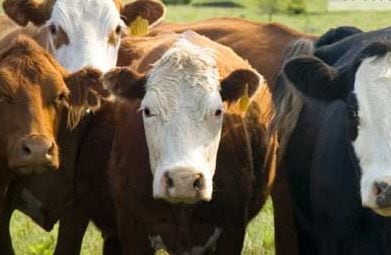According to its new report ‘Meat and Poultry Trends in the US’, US retail sales of meat and poultry products topped $85bn in 2012, up from nearly $73bn in 2008, representing a 17% increase.
However, volumes over the same period went down (despite the fact that the population rose over the same period), with the rise in value sales largely explained by higher selling prices driven by rising production costs, says Packaged Facts.
“Meat consumption in the US has been on the decline for nearly a decade. Volume sales through these outlets (supermarkets, drug stores, and mass merchandisers) in millions of pounds have gone down overall from 2008 to 2012 with decreases in all but two of the meat categories and in one of the two poultry categories.”
Meat consumption in the US has been on the decline for nearly a decade
Two key factors account for this decline, say Packaged Facts: The economy and health concerns, the latter bolstered further this month with the publication of a high-profile study suggesting that carnitine - as well as sodium and saturated fat - could explain why heavy eaters of red meat are more at risk of heart problems.
“As a result, consumers have been eliminating meat from one or more meals per week and reducing the size of portions served”, said David Sprinkle, publisher of Packaged Facts.
While the number of vegetarians in the US is believed to be pretty steady, more Americans are reducing meat consumption to save money, or for health reasons, he says.
“Our survey data show that 12% of US adults strongly agree and 19% somewhat agree that they are eating many meatless/vegetarian meals.”
Financial considerations have also prompted some consumers to switch from red meat to poultry, opt for more store-brand meat case products or choose less expensive cuts, says Packaged Facts.
While the recession has prompted some shoppers to trade down, many others are trading up

However, while volumes are on the slide, and the economy remains sluggish, the future may be brighter for meat and poultry firms than the above data suggests, notes the report.
For a start, while some shoppers are saving cash by trading down, many others are trading up, with Millennials (who lack time and cooking skills) opting for more convenient, value-added, pre-prepared, marinated meats, high-end ready-to-cook products.
Similarly, increasing numbers of more affluent consumers are looking for higher-quality and local, natural, organic or more animal welfare-friendly offerings.
“Consumers are equating higher quality with raising conditions such as free range, grassfed, cage-free, antibiotic-free, no growth hormones, and no gestation crates.”
The Foodie trend has been accelerating in many food categories
It adds: “The Foodie trend has also been accelerating in many food categories, and marketers of meat and poultry are now along for the ride.
“New products promise innovative flavors that reflect global, regional, ethnic, and restaurant-inspired cuisines.”
Hispanic Americans have helped the refrigerated meat category to grow when other meat categories have declined
Meanwhile, changing consumer demographics are also impacting the market.
“Hispanic Americans are the fastest growing segment of the population. These consumers have helped the refrigerated meat category to grow when other meat categories have declined.
"The increasing Asian American population has also helped with the growth of the refrigerated category.”
Finally, boomers are also changing their meat consumption habits for health and economic reasons.
Meatless Mondays

In an interview FoodNavigator-USA last summer, Dr. Robert Lawrence - one of the founding partners of the Meatless Monday campaign - said focus group data showed that different messages developed by the Meatless Monday campaign resonated with different consumers, with some inspired more by health concerns (the largest group) and others concerned about the impact of meat production on animal welfare and the environment (a smaller group).
He added: “You take a general public and you pick off those who are really concerned about public health, those who are concerned about the environment, rural communities, animal welfare, and so on. You add all those up and you are reaching a big sector of the American public.”
Market Forecast
Packaged Facts estimates that the market for meat and poultry will grow to $98bn by 2017, with sales of fresh meat increasing at a CAGR of 2.4%, compared with the 1.82% CAGR predicted for the meat category as a whole.
* Globally, per capita consumption of meat averages 102.5 lbs. The figures include poultry, beef, pork, lamb, and other meats but do not include fish.
Click here for more information.
